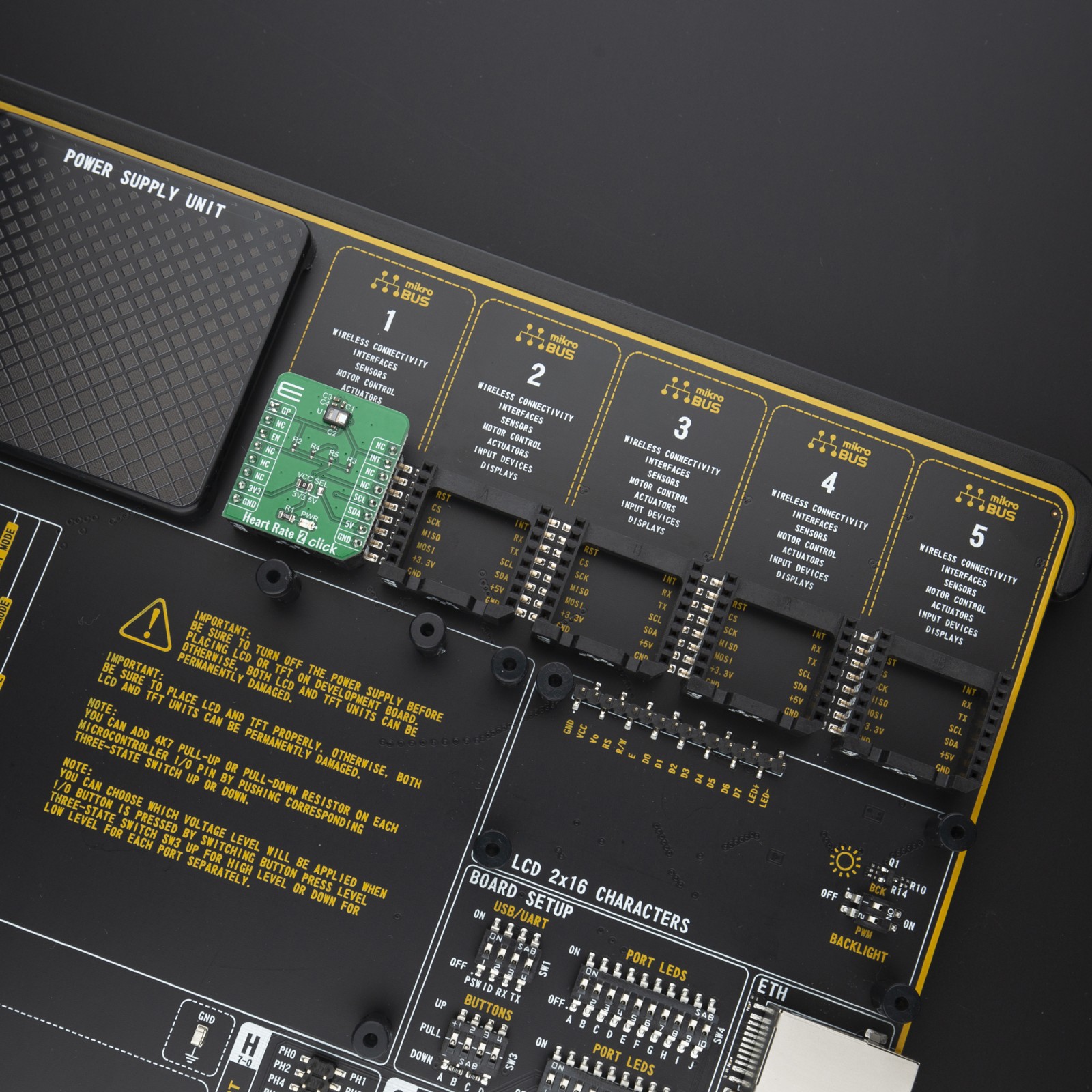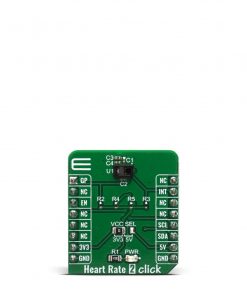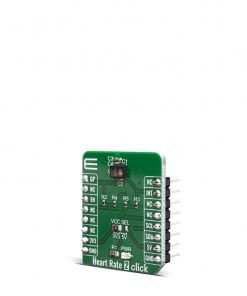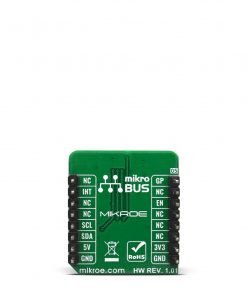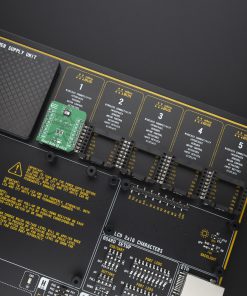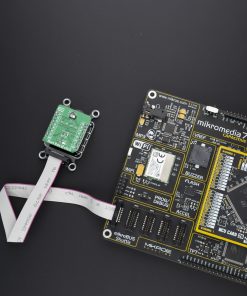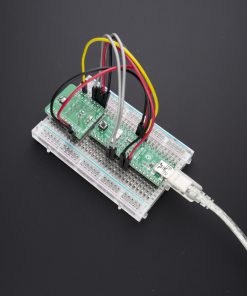Heart Rate 2 Click is an add-on board based on MAXM86161 from Analog Devices a complete, integrated, optical data acquisition system, ideal for optical pulse oximetry and heart-rate detection applications. The optical readout has a low-noise signal conditioning analog front-end (AFE), including 19-bit ADC, an industry-lead ambient light cancellation (ALC) circuit, and a picket fence detect and replace algorithm. It also includes high-resolution optical readout signal processing channels with robust ambient light cancellation and high-current LED driver DACs to form a complete optical readout signal chain.
Heart Rate 2 Click board™ is supported by a mikroSDK compliant library, which includes functions that simplify software development. This Click board™ comes as a fully tested product, ready to be used on a system equipped with the mikroBUS™ socket.
 Accel Click
1 × R355.00
Accel Click
1 × R355.00  DIGI POT Click
1 × R370.00
DIGI POT Click
1 × R370.00  RN4678 Click
1 × R855.00
RN4678 Click
1 × R855.00  BUZZ Click
1 × R115.00
BUZZ Click
1 × R115.00  RTC Click
1 × R390.00
RTC Click
1 × R390.00 



